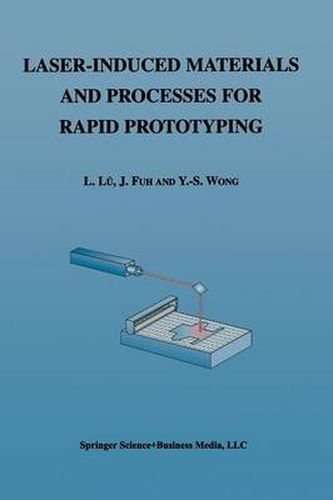Readings Newsletter
Become a Readings Member to make your shopping experience even easier.
Sign in or sign up for free!
You’re not far away from qualifying for FREE standard shipping within Australia
You’ve qualified for FREE standard shipping within Australia
The cart is loading…






This title is printed to order. This book may have been self-published. If so, we cannot guarantee the quality of the content. In the main most books will have gone through the editing process however some may not. We therefore suggest that you be aware of this before ordering this book. If in doubt check either the author or publisher’s details as we are unable to accept any returns unless they are faulty. Please contact us if you have any questions.
The term rapid prototyping (RP) refers to a generic group of emerging technologies that enable very quick fabrication of engineering components primarily targeted for prototyping applications. With RP, very complex three dimensional parts or prototypes can be fabricated without the need of costly tooling and machining. This inevitably leads to much shorter design cycle time and lower cost of building a prototype. Its manifold benefits include significant productivity gains, cost saving, and shortened development time to introduce concept models. As such, RP technologies have attracted tremendous R&D interests from both academia and industry in the past decade. Many different processes and materials have been commercialized and used in industry primarily for the fabrication of physical prototypes. More recent interests in RP technologies are towards functional applications of the fabricated parts, such as in rapid tooling applications and replacements of damaged components. Many processes and materials have been commercialized but are yet to be able to fulfill the aforementioned functional requirements because of limited mechanical strengths of the fabricated parts.
$9.00 standard shipping within Australia
FREE standard shipping within Australia for orders over $100.00
Express & International shipping calculated at checkout
This title is printed to order. This book may have been self-published. If so, we cannot guarantee the quality of the content. In the main most books will have gone through the editing process however some may not. We therefore suggest that you be aware of this before ordering this book. If in doubt check either the author or publisher’s details as we are unable to accept any returns unless they are faulty. Please contact us if you have any questions.
The term rapid prototyping (RP) refers to a generic group of emerging technologies that enable very quick fabrication of engineering components primarily targeted for prototyping applications. With RP, very complex three dimensional parts or prototypes can be fabricated without the need of costly tooling and machining. This inevitably leads to much shorter design cycle time and lower cost of building a prototype. Its manifold benefits include significant productivity gains, cost saving, and shortened development time to introduce concept models. As such, RP technologies have attracted tremendous R&D interests from both academia and industry in the past decade. Many different processes and materials have been commercialized and used in industry primarily for the fabrication of physical prototypes. More recent interests in RP technologies are towards functional applications of the fabricated parts, such as in rapid tooling applications and replacements of damaged components. Many processes and materials have been commercialized but are yet to be able to fulfill the aforementioned functional requirements because of limited mechanical strengths of the fabricated parts.